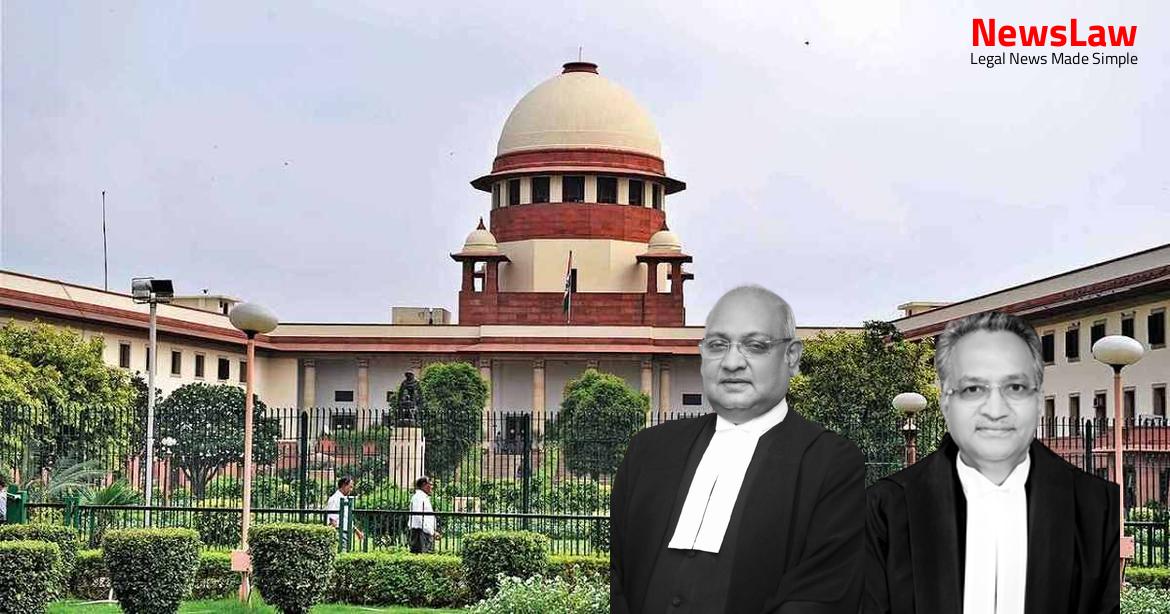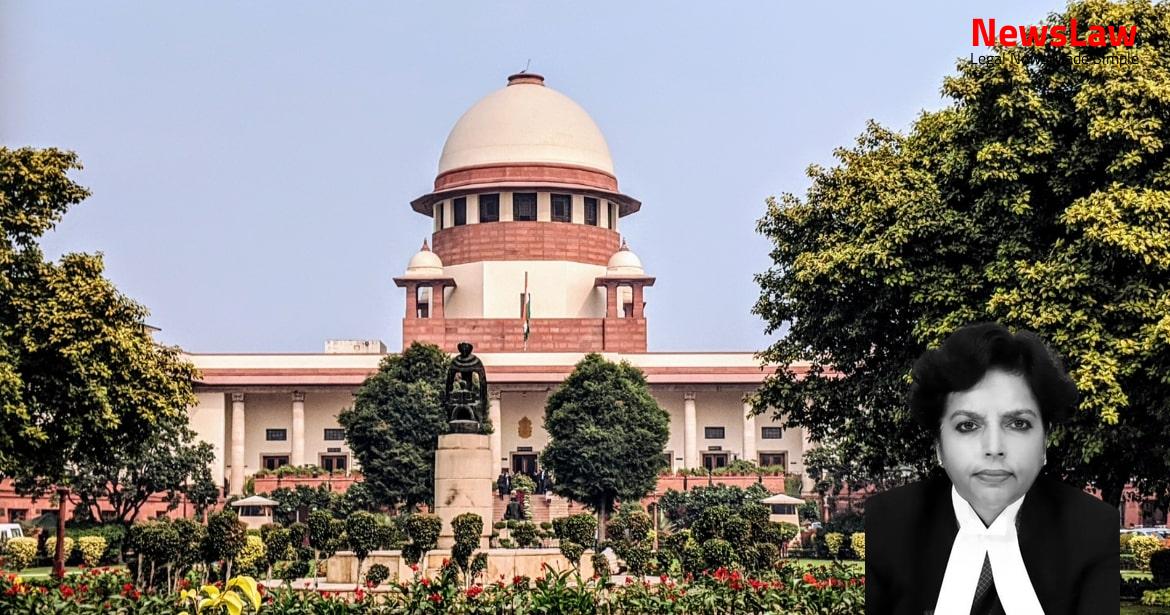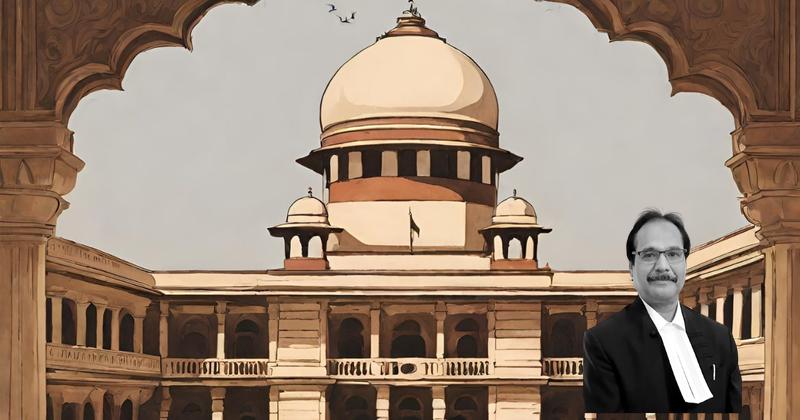Delve into the complex legal landscape of a pivotal case between a Mutt and the State Government concerning land acquisition and damages. The Supreme Court’s ruling addresses critical aspects such as compensation claims, contractual relations, and jurisdictional nuances. Discover the nuances of this legal dispute and the implications it holds for parties involved in similar conflicts.
Facts
- On 13.09.1995, a Single Judge of the High Court allowed the writ petition filed by the appellant and the Mutt.
- The Division Bench in a judgment dated 18.09.1997 set aside the Single Judge’s order and dismissed the writ petition, upholding the State Government’s power to withdraw from the notification.
- The Division Bench rejected the plaintiff’s claim for interest and set aside the findings of the Single Judge on issue No. 6.
- The Division Bench allowed the appeal but left it open for the petitioners to seek damages in the appropriate forum.
- Contempt proceedings were dropped following the decision.
- The Single Judge decreed the suit, awarding the plaintiff Rs. 50.82 lakhs for loss of earnings and Rs. 1 lakh for repairs of the factory office.
- A subsequent judgment dated 15.10.2001 partly decreed the suit, granting the plaintiff Rs. 86,88,000/- with interest.
- The Division Bench disagreed with the Single Judge’s order and dismissed the suit, leaving the option for the Mutt and appellant to pursue damages elsewhere.
- The Division Bench acknowledged the Government’s power to withdraw from the notification and refuse an award under the Act of 1894.
- The Single Judge held the officers guilty of contempt and imposed a fine on them.
- The Division Bench observed that the Mutt and the appellant had a valid case for claiming damages, but the damages must be proven in court.
- The Division Bench in a subsequent judgment dated 26.02.2007 reversed the Single Judge’s decree and dismissed the suit.
- The plaintiff-appellant sought recovery of damages, which was ultimately denied by the Division Bench.
- The Division Bench deemed the Government’s actions as thoughtless and upheld their right to withdraw from the project, causing the appellant and the Mutt to suffer consequences.
- The appellant, a partnership firm, leased land from Mutt for cultivating commercial crops such as tea, coffee, and cardamom.
- The land was proposed to be included in a wildlife sanctuary under the Wild Life (Protection) Act, 1972.
- Attempts were made to exclude the land from the sanctuary, but the proposal was dropped in 1993.
- Several rounds of litigations followed, including writ petitions and appeals.
- The appellant claimed damages for the loss of earnings and other expenses incurred due to the proposed acquisition of the land.
- The appellant alleged that the order excluding the land from the sanctuary was issued to circumvent High Court orders regarding compensation.
- The issue of damages, privity of contract, and territorial jurisdiction were key points of contention.
- The suit for damages was based on the appellant’s inability to use the land due to ongoing legal proceedings.
- A petition for Special Leave to Appeal was dismissed by the court before the appellant pursued the civil suit for recovery of damages.
Also Read: Balancing Justice: Case Summary of C.P. No. 16/2017
Issue
- The Division Bench of the High Court considered the issue of privity of contract between the parties to claim compensation.
- The Division Bench analyzed the relevant provisions of the Act of 1972 and examined two core questions: (1) rights of the appellant concerning the land after the alleged second lease for 25 years following the notification under Section 18(1) of the Act, and (2) whether the appellant’s rights in the land were infringed in a manner that could lead to a claim for damages.
- After reviewing the evidence on record, the Division Bench ruled against the plaintiff-appellant on material questions, including the entitlement to interest.
Also Read: Interpreting Section 14 of the 2002 Act: Equivalence of CJM and CMM
Arguments
- The learned senior counsel for the appellant has meticulously presented arguments against the impugned judgment, highlighting errors in law and facts made by the Division Bench of the High Court.
- The contention is that the State and its officers acted within the legal boundaries of the Act of 1972, making the suit for damages unjustifiable under Section 60 of the Act.
- It is emphasized that as per PW-1’s testimony, no infringement of legal rights occurred, hence no basis for the appellant to claim damages.
- Reference is made to precedents like Kasturi Lal v. State of U.P. to assert that the State cannot be given absolute immunity for its officers’ tortious acts.
- The argument further extends to the issue of limitation, where the appellant argues that the suit was well within the time limit and should not have been dismissed on those grounds.
- The appellant asserts that the assessment of damages, based on loss of earnings during the award inquiry, was on the lower side considering the deprivation suffered.
- It is argued that the appellant’s right to use the property was violated with the land being excluded from the sanctuary after more than two decades, entitling the appellant to claim damages for the loss incurred during this period.
- Legal concepts of ownership and property are brought up to support the appellant’s claim for damages due to the deprivation of usufruct of the land.
- On the other hand, the respondent’s counsel argues that since the land was not acquired by the Government but belonged to the Mutt, any claim for damages should be directed towards the Mutt.
- Additionally, it is contended that the alleged lease of the land for 25 years was null and void as it required sanction from the relevant authority which was not proven.
- The issue of limitation is revisited, with the argument that the suit is well within the time frame, especially considering the admission by the Collector regarding the deprivation of the appellant’s use of the land.
- Section 14 of the Limitation Act requirements were not satisfied.
- The period of prosecuting the writ petition cannot be excluded.
- The suit is required to be dismissed on the ground of limitation.
- Quantum of damages questioned due to lack of proof of actual loss.
- The exclusion of the subject land from the sanctuary was noted.
- The damages quantified for 22 years without reason or justification.
- Assumption made on cause of action accruing upon exclusion order dated 19.11.1993.
- The suit was argued to be clearly barred by limitation.
- Section 14 of the Limitation Act not applicable as subject matter of writ petition differed from the present suit.
- No claim for damages was made in the writ petition according to the counsel.
- Reference made to the decision in Yeshwant Deorao v. Walchand Ramchand: AIR 1951 SC 16.
Also Read: Judgment by Supreme Court of India in M/s. Bhilwara Processors Ltd. vs. Department of Central Excise
Analysis
- The court analyzed the applicable provisions of the Act of 1972 related to the declaration of a sanctuary and land acquisition.
- The appellant’s claim for damages was found to be unsustainable, and the suit was dismissed for lack of merit.
- The court noted that the appellant had no grounds for claiming damages against the State due to the exclusion order.
- The argument regarding the validity of the second lease and the immunity under Section 60 of the Act of 1972 were briefly touched upon but not considered decisive.
- The court observed that the appellant’s claim was not rejected based on these arguments as they were raised late in the proceedings.
- It was emphasized that the appellant had no right to claim damages based on the exclusion order dated 19.11.1993.
- The court indicated that if any exclusion order had provided a right to take legal action, only the Mutt could have pursued it, not the appellant.
- After a sanctuary area is declared, the Collector must determine the existence and extent of rights of any person in that land.
- No new rights can be acquired in the sanctuary area after the notification, except by certain exceptions like succession.
- The Collector must publish a proclamation specifying the limits of the sanctuary and inviting claims for rights within two months from the date of proclamation.
- The Collector has powers to inquire into the claimed rights and other existing rights in the sanctuary area.
- Any exchange, sale, mortgage, or lease exceeding 5 years of land belonging to religious institutions in the sanctuary area is null and void without proper sanction.
- The Collector can grant permits for various purposes like wildlife study, photography, tourism, and business with residents in the sanctuary.
- Restrictions are imposed on entry and residence in the sanctuary except for specific individuals like public servants, residents, and those with property rights.
- Changes were introduced in the sanctuary declaration process by the amending Act No 44 of 1991.
- Courts dealing with matters in the first instance must lack jurisdiction or similar cause to hear the case.
- The High Court declined to grant relief under Article 226 of the Constitution, directing the petitioner to file a civil suit.
- In such circumstances, the petitioner cannot be left without a remedy.
- The High Court held that time spent in winding-up proceedings cannot be excluded in a debt recovery civil action.
- The plaintiff is required to fulfill the conditions of Section 14 for action under the Companies Act.
- The plaintiff-appellant failed to prove unlawful activity by the State or its officials for a claim for damages.
- The Division Bench ruled that without proving unlawful activity, the plaintiff cannot recover any damages.
- The Division Bench decision did not determine rights and liabilities conclusively but indicated the possibility of seeking compensation.
- The aggrieved party has the option of pursuing adequate compensation despite the Government’s non-compulsory land acquisition for sanctuary purposes.
- A Division Bench decision of the Nagpur High Court in Kashinath Shankarappa v. The New Akot Cotton Ginning and Pressing Co. Ltd. is also referenced.
- The Division Bench of the High Court allowed the appeal filed by the State, dismissing the baseless suit by the appellant.
- The suit filed by the plaintiff-appellant was found to be barred by limitation.
- The plaintiff had no case on merits to claim damages from the State.
- The High Court rightly dismissed the suit filed by the appellant.
Decision
- Parties to bear their own costs throughout the case
- Appeal stands dismissed
Case Title: M/S NATESAN AGENCIES (PLANTATIONS) Vs. STATE REP. BY THE SECRETARY TO GOVERNMENT ENVIRONMENT AND FORESTS DEPARTMENT
Case Number: C.A. No.-005397-005397 / 2010



